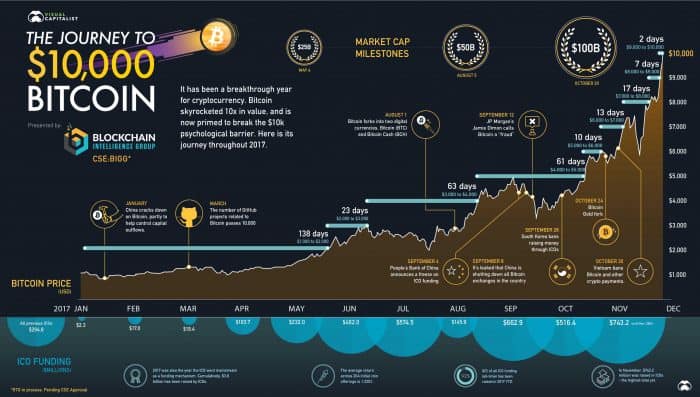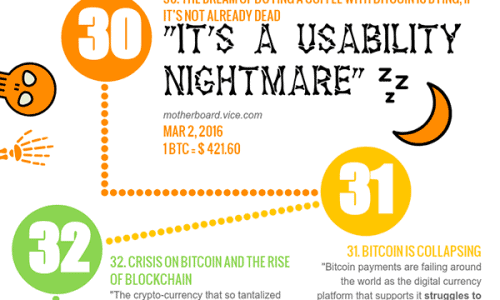
In 2017, Bitcoin found its way into world consciousness. Even those who did not care to know about the mysterious currency were forced to take notice as its value skyrocketed, and major news sources began heavily covering the history and outcomes of the mystical electronic coin.
A year ago bitcoin hit the $1,000 mark and continued to spike upward throughout the year before breaking the $10,000 mark on November 28, 2017. It went on to flirt with $20,000 in December, before taking a breather.
Bitcoin is no longer just a whimsical form of currency used for corrupt means on the dark web (which is definitely a part of its current state and past history) or a way for F Society-type rebels to shun the dollar as well as the national economy. Its ascent has whipped up those with FOMO into a frenzy.
More businesses are starting to accept Bitcoin directly, and those who don’t may be falling behind. In fact, Overstock began accepting bitcoins in January 2014, allowing customers to buy everything from flat screens and laptops to bedding and rugs. They actually accepts other major cryptocurrencies such as Ethereum and Litecoin. Large brands like Expedia and Dish Network also led the way in 2014.
Bitcoin’s rise is nothing short of astounding (tulip mania anyone?) In 2010, one bitcoin was worth 6 cents, but very few people thought anything of the digital currency. On January 1, 2011, bitcoin’s value sat at 30 cents, so at the time, a $100 investment in it would have resulted in you having an electronic pocket full of 333.33 coins.
It has been a wild and random ride full of ups and downs, but if you had 333.33 bitcoins purchased in 2011, that you didn’t sell or lose through hackings, your $100 investment would now be worth nearly $3.8 million. You can bet you had a trader or two making money on a btc profit app.
As a Business Insider headliner exclaimed, 10,000 bitcoins could buy two pizzas in 2010, but is now worth $100 million. For a comparison of bitcoin to gold click here.




